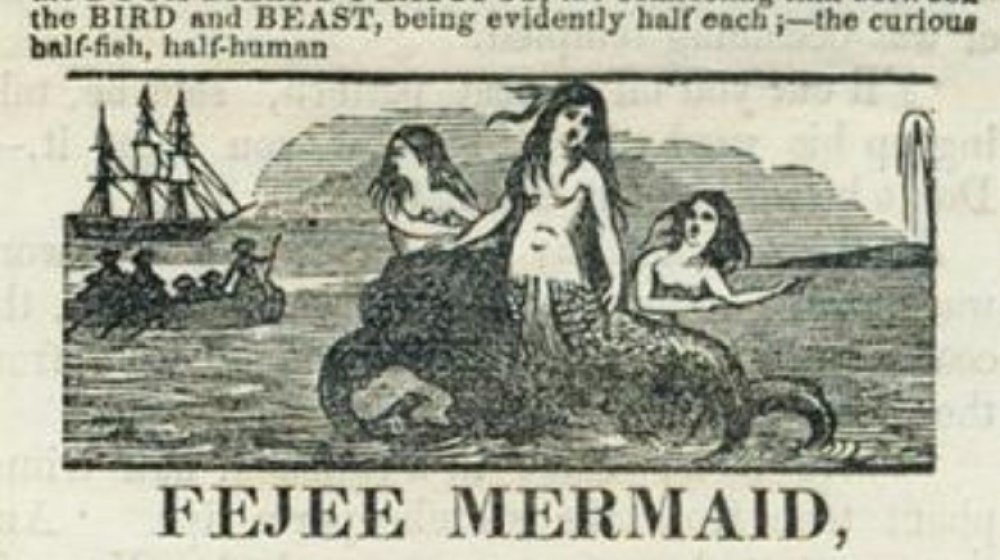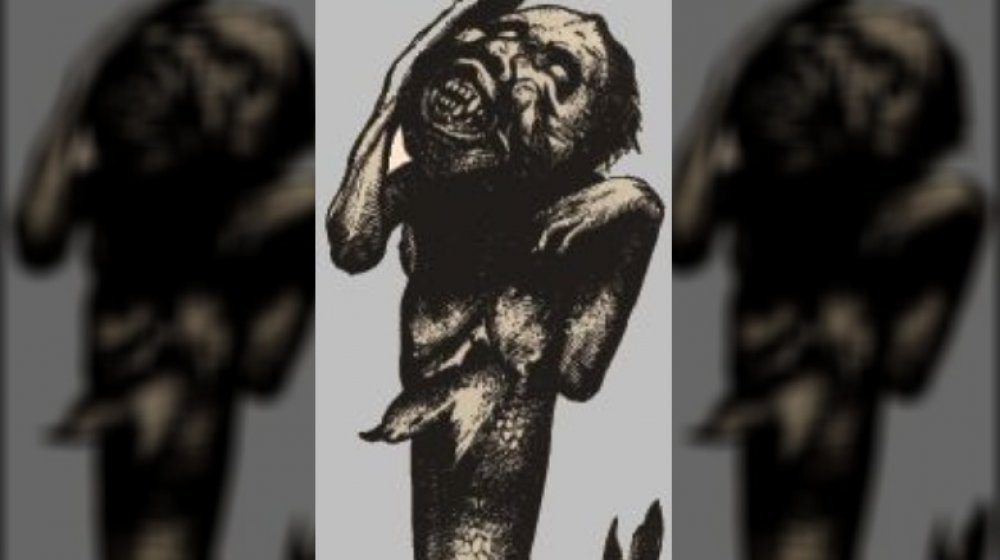The Truth About P.T. Barnum's Mermaid Hoax
The legacy of Phineas Taylor Barnum is a cultural monolith built on murky ground. Nearly everything that he's remembered for today, Wolverine musicals notwithstanding, was sketchy business of the highest order: his 11-year-old little person was actually four when he started performing, and his 161-year-old nursemaid to George Washington was a starving 80-year-old slave on lease. His properties burned down with astonishing regularity, with the insurance payouts helping to pay for new ventures. As you read about the guy and the details of his life, your head starts to tilt in five degree intervals until eventually you have a crazy straw for a neck.
Still, hope springs eternal. Surely some part of the man's career wasn't steeped in deception. He did, after all, bring remarkable spectacles from all corners of the world to the viewing public, housing whales in his American Museum and entertaining the royals and elected officials of countries across the globe. Surely there was, at least in some cases, an inkling of truth to his claims.
All of which is to say, maybe he really did have the remains of a mermaid. Who's to say?
Fish bits and monkey mer-der
We are. We're to say. He didn't have a real dead mermaid on display. That didn't stop him from telling people that he did, though, or from making a killing doing it.
The history of Barnum's "Feejee Mermaid" is tough to nail down. In a 1977 article in the Journal of Western Folklore, Steven C. Levi posited that it was created by a Japanese fisherman in the early 1800s, either as part of a religious ritual or, more likely, as a goof. It, like the zany taxidermied mermaids that can still be found displayed in beachside gift shops around the world, was not, from a scientific perspective, a mermaid. It was the mummified top half of a monkey stapled to the dried bottom half of a fish.
Of course, that's not how Barnum sold it. In his pamphlets and advertisements, he utilized pictures of beautiful women with ichthyic undercarriages, lounging topless on the rocks and luring sailors with their siren song. It was the perfect addition to Barnum's New York museum, and the showman took possession of the Frankenstein-ian monstrosity in 1842.
According to LiveScience, the success of the display hinged on real-world curiosity: it came at a time of exciting scientific discovery, when new and fantastic species were being discovered with astonishing regularity. What reason would Joe Public have to doubt the veracity of the discovery of a beautiful water nymph when, that very year, researchers had begun to theorize that dinosaurs were a thing? In any case, the mermaid became an astonishing success for the Barnum brand, and its star only faded when, yes, Barnum's museum burned to the ground.

